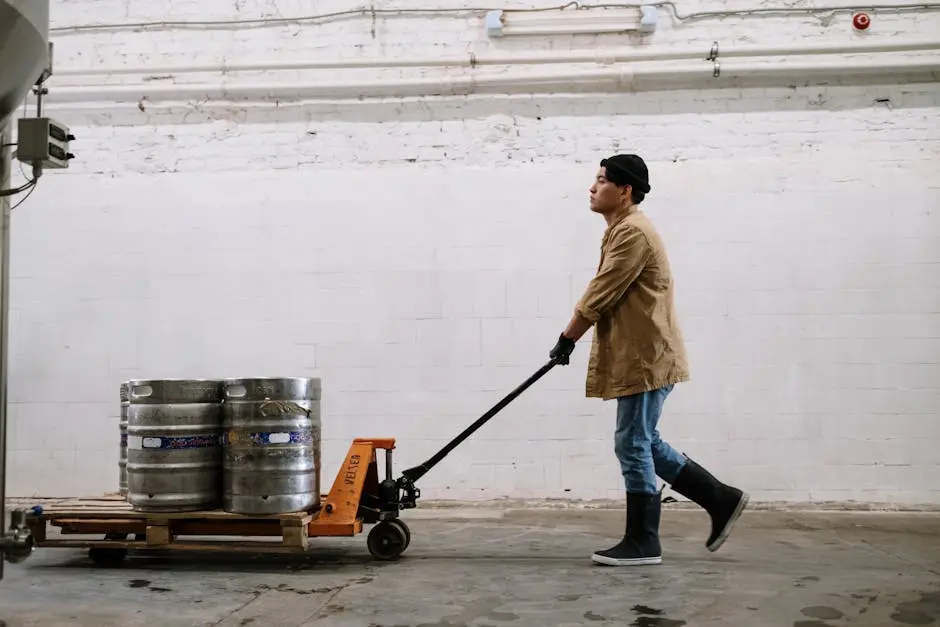7 Essential Features to Look for in Work Boots for Men
Share
When it comes to choosing the right work boots, it’s crucial to consider features that ensure safety, comfort, and durability. Making an informed decision can greatly impact your daily work experience. Here are some essential features to look for in work boots for men, explained in simple terms with a friendly touch.
1. Durable Materials for Longevity
The material of your work boots plays an important role in their longevity. Opt for boots made with high-quality leather or synthetic materials that withstand wear and tear, ensuring they last through the toughest work conditions. Unlike regular footwear, work boots are exposed to harsh environments, which means they must be constructed from materials that resist abrasions, chemicals, and harsh weather. This durability not only extends the life of your boots but also protects your feet from unexpected hazards. High-grade leather, for instance, not only ages like fine wine but also provides a water-resistant barrier. On the other hand, some modern synthetic materials can offer lighter alternatives without compromising on toughness.
2. Slip-Resistant Soles for Safety
Safety on the job is paramount, and slip-resistant soles can prevent accidents on wet or oily surfaces. Look for boots with well-designed tread patterns that provide excellent grip and traction. Different work environments pose unique challenges, such as slick surfaces in kitchens or puddles on construction sites. It’s critical that your boots offer stability and reduce the risk of slips and falls. Some boots incorporate advanced outsole materials that offer superior grip, keeping you steady on your feet.
3. Comfort with Cushioning and Support
Comfort is key, especially during long work hours. Boots with ample cushioning and arch support ensure your feet remain comfortable, reducing fatigue and pain. When on your feet for extended periods, comfort features like cushioned insoles and supportive arches can make all the difference. They not only relieve pressure points but also promote better posture, leading to less strain on your lower back. Some boots even offer customizable insoles, allowing you to adapt the fit and feel to your unique needs.
4. Waterproof Features for Weather Protection
Working in wet conditions demands waterproof boots to keep your feet dry. Look for boots with a waterproof lining or membrane that effectively blocks moisture from getting in. A reliable waterproof feature doesn’t just prevent discomfort; it also protects your foot health by avoiding bacteria and fungi that thrive in damp environments. Technologies like Gore-Tex are popular for their breathability and waterproof qualities, making them ideal for rainy days or splash-prone areas.
While waterproof linings are crucial, it’s also important to consider boots with well-sealed seams and treated leather to enhance water resistance. Remember, dry feet lead to happier days at work, freeing you to focus on the task at hand without concerns over sogginess affecting your performance.
5. Steel or Composite Toe for Injury Prevention
Protecting your toes from falling objects or compression is crucial. Choose between steel or composite toe caps, both providing excellent protection while meeting safety standards. Steel toes have a long history of offering superior impact resistance, making them a go-to for industries with high-risk environments. However, for those in lighter-duty settings, composite toes can offer the same level of protection with added benefits of being lighter and not setting off metal detectors.
It’s essential to determine the right choice based on your specific workplace hazards. For instance, those exposed to electrical risks might favor composite toes for their non-conductive properties. Ultimately, both options are designed to absorb impact and keep your feet shielded from potential dangers.
6. Breathability for Temperature Control
Breathable boots can make a significant difference, especially in hot environments. Select boots with breathable linings that keep your feet cool and reduce sweating. This feature enhances comfort by allowing air circulation within the boot, preventing overheating. Materials like mesh and certain textile linings are designed to wick moisture away, ensuring your feet stay dry.
Incorporating breathable designs into boots doesn’t compromise their protective capabilities. Instead, it offers a balanced approach, enabling effective moisture management that supports both comfort and hygiene. Your feet will thank you after hours of labor in warm conditions.
7. Flexible Construction for Easy Movement
A flexible boot design allows for natural movement, which is essential for tasks requiring agility. Look for boots crafted with flexible materials that accommodate your foot’s movement. This is particularly valuable in jobs that require frequent kneeling, bending, or climbing. Boots that flex naturally with your foot provide less resistance during movement, cutting down on fatigue.
Advanced construction technologies now include features like articulated joints and ergonomic designs. These innovations ensure that, while your boots remain sturdy and protective, they don’t hinder your natural gait. The result? Efficiency and comfort throughout your workday.

